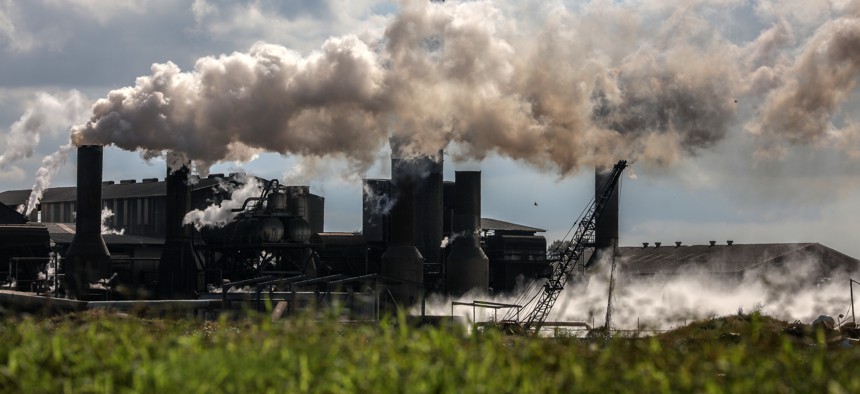Gulf Coast carbon capture gets $1 billion boost from Biden administration

Smoke billowing from a sugar refinery in Louisiana PaulScannellPhotography/GettyImages
Texas and Louisiana are slated for largest-ever investment in direct air capture as part of an initiative that aims to build a nationwide network of large-scale carbon removal sites to mitigate the climate crisis.
This story was first published by Grist. Read the original article here.
The Biden administration announced its biggest effort yet last week to scrub carbon dioxide out of the air, with more than $1 billion going to two facilities on the Gulf Coast that will use “direct air” carbon capture technology.
Direct air capture, or DAC, is a process which separates carbon from oxygen, and reduces CO2 in the atmosphere. The trapped CO2 can then be safely stored underground, deep in the ocean or converted into useful carbon products like concrete, which would prevent its release back into the air.
Project Cypress will be built in Calcasieu Parish, Louisiana and the South Texas DAC is planned for Kleberg County, Texas. Both sites are designed to capture up to 1 million metric tons of carbon dioxide per year initially. Officials said the projects will create over 4,500 jobs for local workers and people formerly employed in the fossil fuel industry.
The process of direct air capture is a great way to mitigate the global warming crisis, said Daniel Sigman, Dusenbury Professor of Geological and Geophysical Sciences at Princeton University.
“This carbon capture and sequestration involves stripping CO2 out of the air and putting it somewhere,” Sigman said. “Carbon capture is something that people become interested in when it’s too late to prevent carbon dioxide emissions. “
However, some scientists think the initiative is a waste of money because DAC requires a significant amount of energy to purify CO2 and store it, making it one of the most expensive and inefficient ways to sequester carbon.
The initiative is being funded through the Bipartisan Infrastructure Law of 2021 and is part of a Department of Energy initiative which aims to build a nationwide network of large-scale carbon removal sites to mitigate the climate crisis.
“Cutting back on our carbon emissions alone won’t reverse the growing impacts of climate change; we also need to remove the CO2 that we’ve already put in the atmosphere—which nearly every climate model makes clear is essential to achieving a net-zero global economy by 2050,” said U.S. Secretary of Energy Jennifer M. Granholm in a statement.
The funding for the project was noted as the world’s largest-ever investment in engineered carbon removal, with each new hub expected to clear more than 250 times more carbon dioxide from the air than the largest direct air capturing facility currently operating.
Sigman said getting the technology right for something of this magnitude is tricky. With carbon dioxide making up around 420 parts per million of molecules it’s a challenge to come up with chemical means to strip those molecules out of the air, he said.
“Carbon dioxide is throughout our whole atmosphere,” said Sigman. “So we have to think about how much our atmosphere is going to be passing through Texas and Louisiana, we have to think about how much of our atmosphere will be passing through these areas.”





